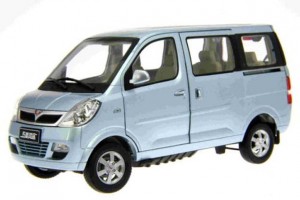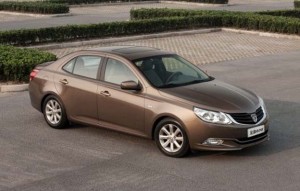Far from the bright lights and sophistication of its base in Shanghai, General Motors has developed a secret weapon in the duel for supremacy in the Chinese market. In 2010, SGMWuling, or Wuling for short, generated roughly 50% of all GM’s sales in China.
Based in LiuZhou, a gritty industrial city some 1,400 kilometers (875 miles) south of Shanghai, Wuling is now the single largest brand sold in all of China – by far dominating the more familiar Buick brand that was GM;s first entry into the Chinese market. Wuling’s small, utilitarian vans dominate one of the largest and most important segments in China’s fast-growing vehicle market and it’s quickly adding capacity to capitalize on its recent success.
In addition, Wuling is launching its own car brand, Baojun, which will fill in price points below Chevrolet and appeal to motorists in China’s second, third and fourth-tier cities where buyers tend to be more concerned about value and affordability than status.
“Wuling is most respected in rural areas,” notes Kevin Wale, president of GM China, adding Baojun is aimed at market where buyers want value. Thus, the prices for the Baojun 630, which was unveiled at the Shanghai Motor Show last week, is expected to start at around $8,500. SGMW hasn’t confirmed any prices yet, however no vehicle in the line now costs more than $9,500.
Wuling already sells one passenger car, the Letchi, which is based on the old Chevrolet Spark, and the plans are to add more models to the Baojun line fairly quickly. It will compete for sales in inland China with regional brands that play an important role for ambitious local Chinese auto companies such as Geely and Chery.
Matthew Tsien, Wuling vice president and one of a small cadre of GM personnel assigned to LiuZhou, explained that Wuling is a three-way joint venture between GM, its Shanghai-based partner SAIC and a local, state-owned enterprise, LiuZhou Wuling Motor Co. Ltd.

Wuling's small vans are often used for both commercial and personal applications by first-time buyers.
All three partners have contributed to the success of Wuling, which has grown steadily since the venture was organized in 2002, Tsien said.
For example, employment at the Wuling manufacturing complex in LiuZhou, has grown from roughly 4,000 in 2003 to more than 11,000 today and SGMW is continuing to add new jobs as the company expands, said Tsien.
GM has brought advanced technology, providing Wuling with sophisticated new small engines, engine manufacturing technology and management expertise, Tsien noted. Wuling, while it also makes components, also use GM’s worldwide purchasing organization.
However, Wuling, which traces its roots back to China’s “Great Leap Forward,” in the late 1950s, had already developed a strong identity before it entered the partnership. Wuling, which started building tractors in 1966 and moved on to mini-vehicles in the early 1980s, entered the venture with a strong operating culture, Tsien said.
“People here are very down to earth. They’re a lot like Midwesterners,” he said.
Much of Wuling’s success in recent years has been built on its strong appeal in rural areas where half of China’s populations still resides. Wuling vehicles, such as the N107 Sunshine, have developed an excellent reputation for reliability and durability.
The price for the N107 starts at 29,900 yuan or $4,500 and it does yeoman duty as a commercial vehicle. Like other Wuling vehicles, however, it typically does double-duty, providing a family or personal vehicle when the owner is away from work.
By western standards, the N107 is Spartan. But it has a comfortable driver’s seat, seatbelts, adequate power, a capable suspension and its manual transmission is easy to use. Wuling also has been adding variations of the N107 with more features and better performance so customers — most of whom have never owned a vehicle — actually have a choice when they enter a dealership.
In LiuZhou, 80% of Wuling buyers come from the rural areas and all pay cash, according to the general manager of one of two local Wuling dealerships.
Since the joint venture was organized, Wuling’s share of mini-commercial vehicles has grown by 40%. In addition, the number of regions where Wuling’s market share is more than 40% has grown from three to 20.
Tsien also said Wuling is adding more capacity to fulfill the growing demand for small, mini-type commercial vehicles. Wuling’s LiuZhou complex, which operates more than 315 days per year, can build approximately 700,000 vehicles annually now and SGMW is adding another 110,000 units of capacity.
In addition, a second Wuling assembly plant in Qingdao currently capable of building 330,000 units is adding another 220,000 units of capacity.
GM is also planning to use Wuling to expand its presence in India. Plans call for Wuling mini-commercial vehicles made in China to be exported to India. “They think our vehicles will do well there,” Tsien said.

